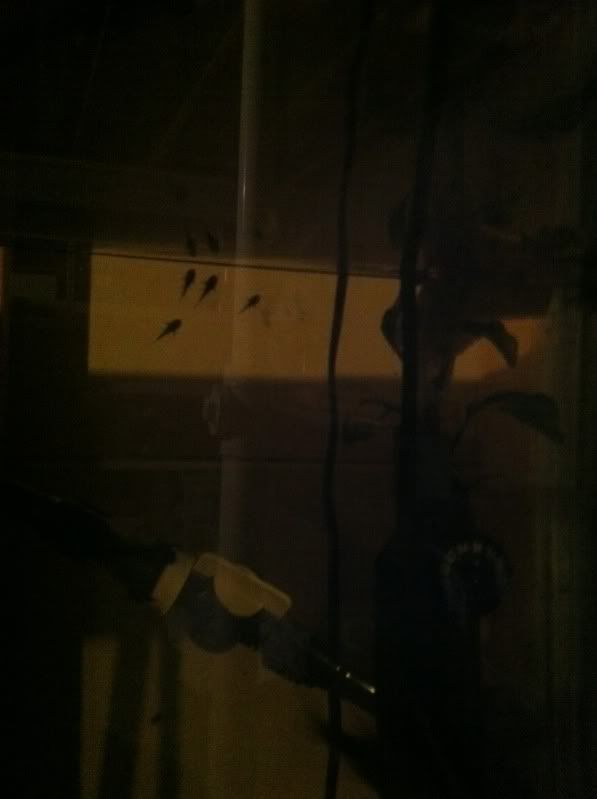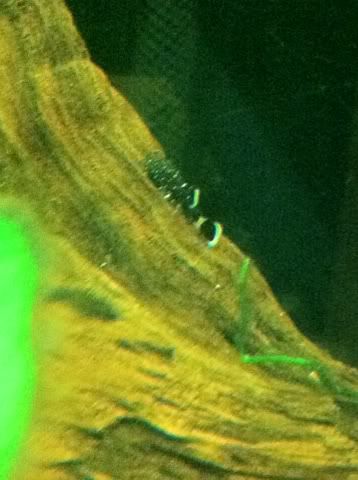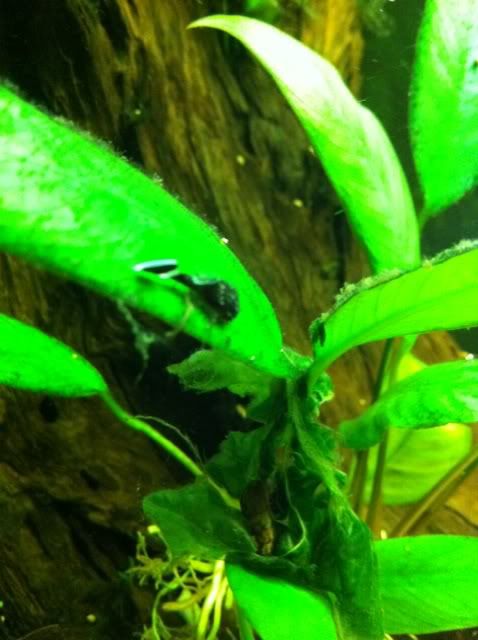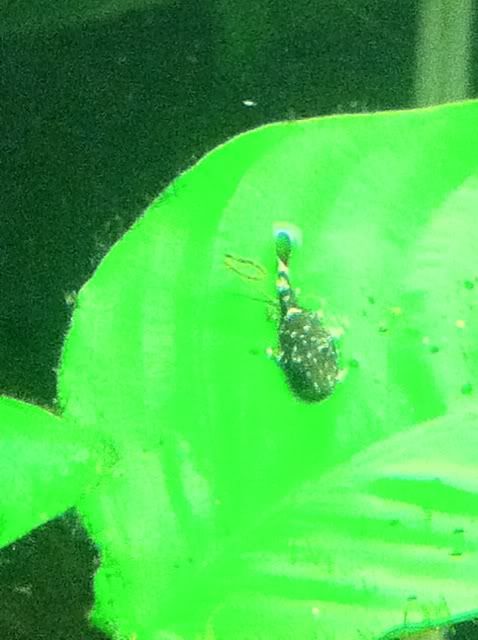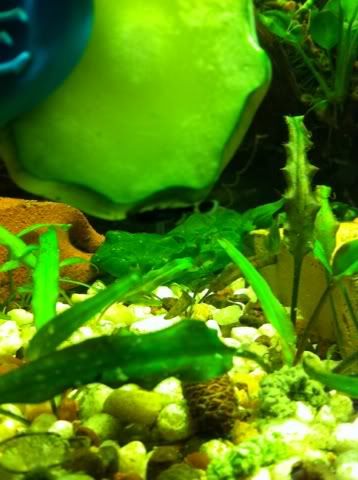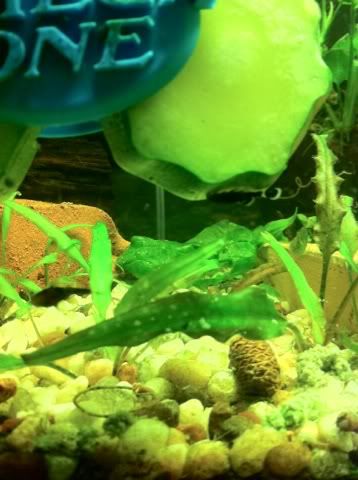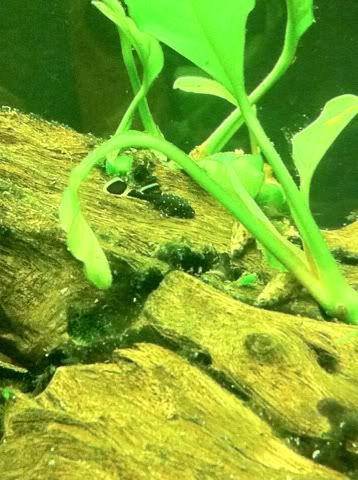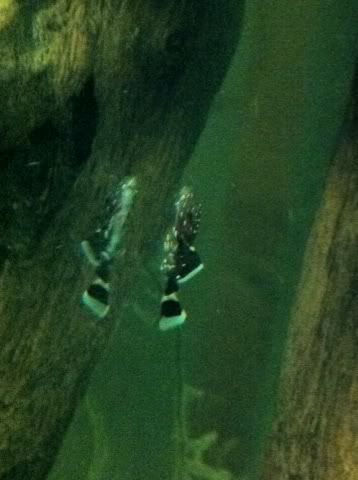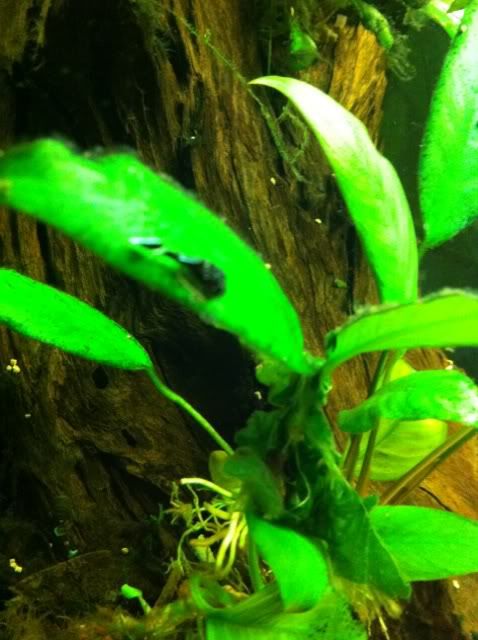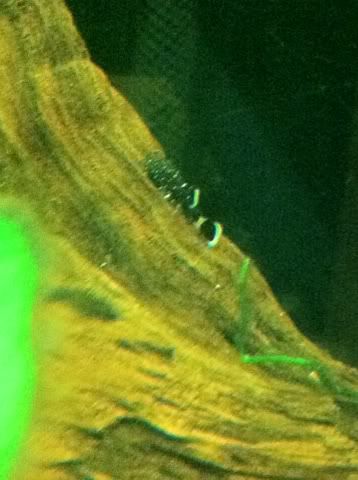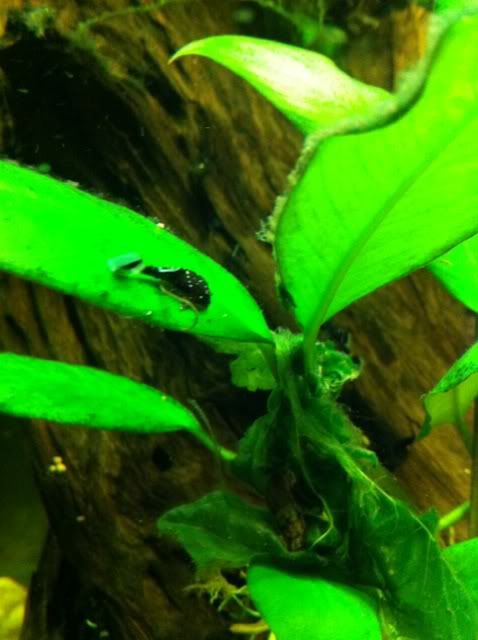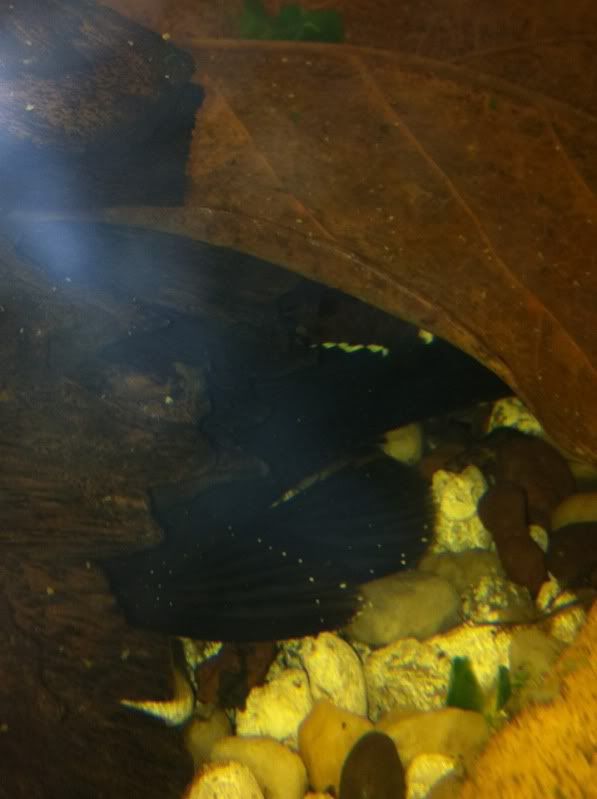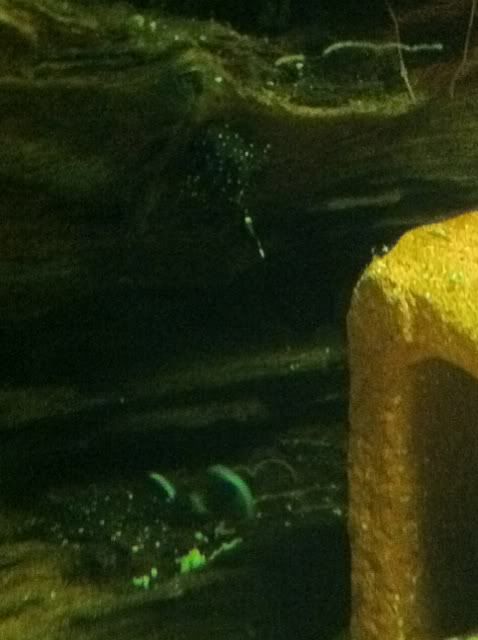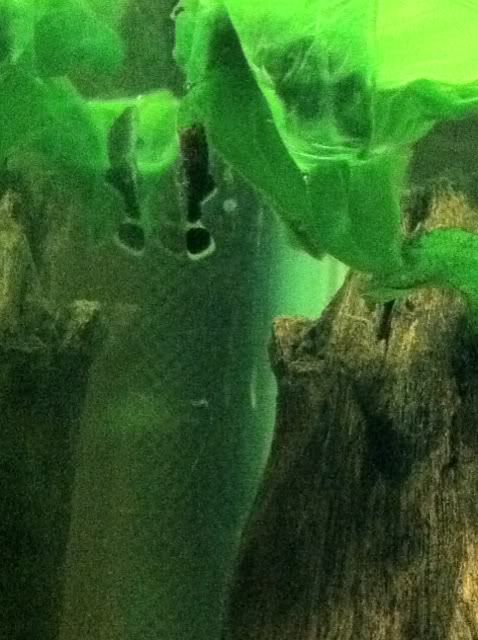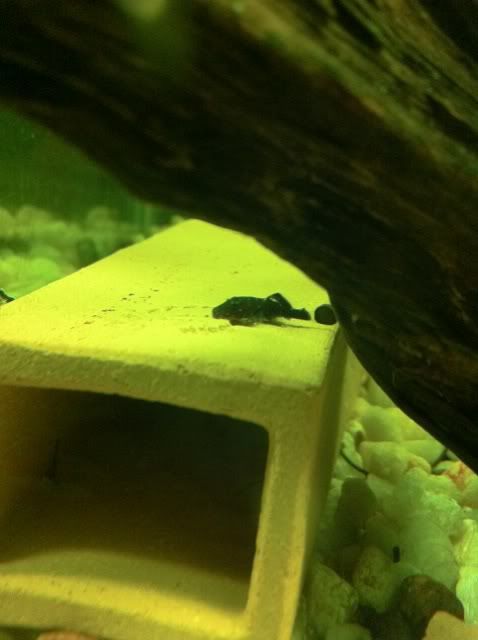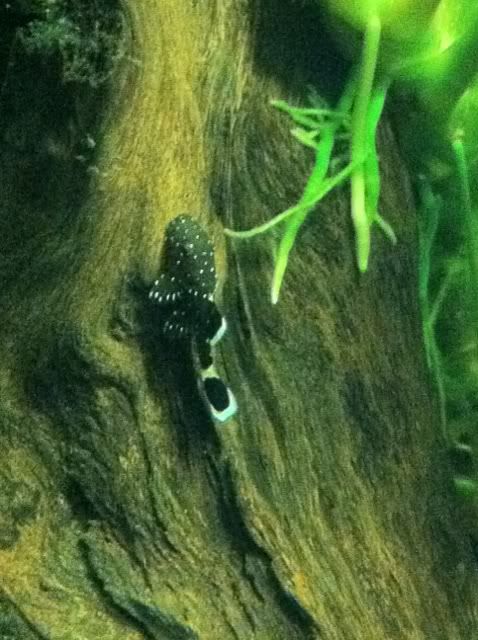Page 1 of 2
Re: My 183's mated and I didnt even know it!!!
Posted: 16 Feb 2011, 01:52
by bsmith
I know they do but I can tell 100% that ther are your normal hardened epoxy clown puke gravel.
Re: My 183's mated and I didnt even know it!!!
Posted: 16 Feb 2011, 10:33
by dw1305
Hi all,
pH crashes, something I have been trying to dispel in high tech co2 injected tanks now for the past few months. Maybe in a setting like this it is possible but I am still trying to figure out how they happen. In a planted tank with co2 I have the has a GH of less than 1 degree I pump copious amounts of gas in there and have yet to have an issue, this tank is stocked with Discus and Cardinal tetras (pretty sensitive to fluctuations). It is also the same case on a low tech tank I have that houses high grade CRS and more difficult Crypts, almost no "buffering" capacity and still not ever an issue.
I think this is a much misunderstood subject area. We had a thread about this a while ago <
http://www.planetcatfish.com/forum/view ... =5&t=32162>. I understand that people have had their pH decline rapidly, and at the same time they have had loss of (or damage to) much loved (and often expensive) fish and they are fully entitled to their opinions based upon their own experience, but the pH decline and damage to livestock are both symptoms of other problems, it is not the pH "crash" directly causing the fish death.
Bio-acidification
I'd recommend that people read this, as it covers the relevant points and is better written than I can manage. <
http://www.skepticalaquarist.com/docs/w ... acid.shtml>
As other posters have pointed out the there is a fairly straight forward relationship between pH and KH. I'd go a lot further
"any pH value quoted without some measure of the carbonate buffering" is basically valueless.
The concept of buffering isn't something that is instantly obvious so I'll use the "Cup of Tea" analogy, it isn't chemically correct but hopefully it is easy to follow:
"
I think of the concept of buffering like putting 4 spoonfuls of sugar in your tea. Once the tea is really sweet ("the solution is fully saturated"), some sugar will remain undissolved in the bottom of the cup. If you drink some of that cup of tea, then pour some more tea into it from the tea pot you have diluted your solution and it is no longer fully saturated with sugar. As soon as the solution isn't fully saturated with sugar some more of the sugar will now go into solution from the reservoir at the bottom of the cup. In this case the undissolved sugar reservoir is your buffer".
I'll also try and summarise (some chemistry) the various components relevant to pH, Hardness and TDS :
pH
Is a bit of a funny measurement. Because acidity/alkalinity is difficult to calculate, or compare (without using titremetric methods) the pH scale was developed which acts as a proxy, by expressing acidity/alkalinity in terms of the equivalent activity of H+ ions (also called "protons", and actually in the form of hydronium ions H3O+)
I'll use Wikipedia for this as it covers the important bit fairly succinctly.
"
In a solution pH approximates ... to p[H], the negative logarithm (base 10) of the molar concentration of dissolved hydronium ions (H3O+); a low pH indicates a high concentration of hydronium ions, while a high pH indicates a low concentration. Crudely, this negative of the logarithm matches the number of places behind the decimal point, so for example 0.1 molar hydrochloric acid should be near pH 1 and 0.0001 molar HCl should be near pH 4 (the base 10 logarithms of 0.1 and 0.0001 being −1, and −4, respectively). Pure (de-ionised) water is neutral, and can be considered either a very weak acid or a very weak base (centre of the 0 to 14 pH scale), giving it a pH of 7 (at 25 °C (77 °F)), or 0.0000001 M H+.[1] For an aqueous solution to have a higher pH, a base must be dissolved in it, which binds away many of these rare hydrogen ions. Hydrogen ions in water can be written simply as H+ or as hydronium (H3O+) ions."
Acidity
"
An acid is a substance which can act as a proton (H+) donor. Most acids encountered in everyday life are aqueous solutions, or can be dissolved in water, and these two definitions are most relevant. The reason why pH of acids are less than 7 is that the concentration of hydronium ions is greater than 10−7 moles per litre. Since pH is defined as the negative logarithm of the concentration of hydronium ions, acids have pH of less than 7".
Alkalinity or basicity
"
A base in chemistry is a substance that can accept hydrogen ions or more generally, donate electron pairs. A soluble base is referred to as an alkali if it contains and releases hydroxide ions (OH−) quantitatively. The Brønsted-Lowry theory defines bases as proton (hydrogen ion H+) acceptors".
So out of all that the important bit is
acids are H+ donors and alkalis are H+ acceptors.
If we have a situation where we have added Indian Almond leaves, or peat filtered the water, humic acid (from the leaves or peat) will bind with the positively charged calcium and magnesium ions, and exchange them for positively charged hydrogen ions, decreasing the pH. So this is an acid / base reaction.
dGH is the measure of the divalent cations (Ca2+ and Mg2+), from the peat reaction you can see that if you have water with a high dGH (conc. of Ca and Mg ions), you need a lot of peat to donate enough H+ ions to accept all the Ca/Mg 2+ ions. This process doesn't greatly effect the TDS, all you have done is replaced one sort of compound with another. Probably this is best shown by an image (NaCl/H2SO4 can be any salt/acid, weak acids will have a much smaller effect on conductivity (measured as microS or ppm TDS)):

These are general acid base interactions, but we can then look at a specific acid / base pair, the pairing that is probably most relevant to us is the reaction between CO2 and carbonates, this is slightly complicated by the disassociation into bicarbonate and carbonate, but starts with CO2 dissolving to form carbonic acid (H2CO3):
CO2 + H2O is in equilibrium with H2CO3.
You can drive the equation in either direction by adding either CO2 or a source of carbonates:
CO32− +2 H2O ↔ HCO3− + H2O + OH− ↔ H2CO3 +2 OH−
&
H2CO3 +2 H2O ↔ HCO3− + H3O+ + H2O ↔ CO32− +2 H3O+
If you have very hard carbonate rich water (water with a high dKH "K(c)arbonate Hardness") you have a large supply of carbonate, this is "buffering", the potential to neutralise acids (or technically to accept H+ ions). The dKH is from the carbon dioxide (CO2, but dissolved as H2CO3 in rainwater) reacting with limestone (calcium carbonate (CaCO3)) in the aquifer to form soluble calcium bicarbonate (Ca(HCO3)2) and giving you a large reserve of carbonate buffering in the water.
Specific Case - Soft alkaline water
I'll run through a specific case, this water belongs to a
Hypancistrus zebra breeder from NE Scotland and has a number of unusual parameters, his question were:
do I need to use RO/HMA filters? and how can he lower the pH of his water?
My tap water has the following parameters
Ph 8.40
TDS 103
GH 5dKH (107.4ppm)
KH 3dKH (53.7 ppm)".
I'll put my reply in green.
Strange as it may sound, as this starts with pH8.4, this is actually a very good starting point. Your pH8.4 is a very long way from the pH8ish that I get in our infinitely carbonate buffered tap water.
TDS 103 - so about 150 microS, fairly low conductivity. This means that there aren't many salts of any description, and no reservoir of buffering (to go back to the tea cup analogy, there is very little sugar in your tea and it has all dissolved.)
Hardness, dGH5 and dKH3 some hardness and buffering, but not too much. Almost perfect except for the pH, but in this case we can be almost certain that the pH relates to a relatively small amount of alkaline (or basic) ions in your water, not a carbonate ion because of the low dKH value, so this is almost certainly the very small amount of the strong alkali "caustic soda" (sodium hydroxide - NaOH) the water company added, specifically to raise the pH and stop the water dissolving lead/copper pipes.
Water in the tank:
PH 6.64 (held there by 6.5 Buffer)
TDS 243
GH 3dKH (53.7ppm)
KH 2dKH (35.8 ppm)
TDS has gone up to 243, almost certainly because of the buffer, because both dGH and dKH have gone down. The drop in dGH/KH is probably via bio-acidification or the humic acids from Indian almond leaves swapping H+ ions for Ca2+ ions). Because dGH/KH are lower you haven't added any Ca2+ or carbonates, but you have added something that lowers the pH, down to pH 6.6.
To buffer a solution to pH6.5 you would normally use a phosphate buffer utilising the acid/alkali equilibrium between di-sodium hydrogen phosphate (Na2HPO4 - a weak acid) and mono-sodium hydrogen phosphate (NaH2PO4 a weak base), and that would be my guess, that you have been using a phosphate buffer <
http://www.aquatics-online.co.uk/catalo ... usters.asp>.
The good news is you definitely don't need the buffer. The pH of your tap water should reduce naturally as you add weak acids from peat filtration, Indian almond leaves, Alder cones etc. It may need monitoring to stop it declining to too low a pH, you can buffer it back up with some Oyster shell grit or 4dkH solution like the one http://dennerle.com/global/index.php?op ... 94&lang=en.
You may not actually need it but the RO unit won't do any harm, the membrane will last a long time and you will have little "waste" water. The same with the HMA filter, it should last a long time because your water is pretty pure all ready, and it will make sure you don't have heavy metal problems.
Sorry it is such a long post.
cheers Darrel
Re: My 183's mated and I didnt even know it!!!
Posted: 16 Feb 2011, 15:17
by bsmith
Thats what I was looking for. Thanks for the post D.
Re: My 183's mated and I didnt even know it!!!
Posted: 16 Feb 2011, 20:17
by bsmith
Re: My 183's mated and I didnt even know it!!!
Posted: 16 Feb 2011, 20:33
by MatsP
Told ya that you'd find more...
--
Mats
Re: My 183's mated and I didnt even know it!!!
Posted: 16 Feb 2011, 20:50
by bsmith
I'm wondering I'd I should worry about removing them. They all seem to be doing well and if you can tell from the pics, there should be plenty of stuff for them to eat around the tank.
Re: My 183's mated and I didnt even know it!!!
Posted: 16 Feb 2011, 23:17
by apistomaster
I like to leave my pleco fry in the breeding tank until they are close to 1/2 to 3/4 inches long. They are not so delicate at that point to handling or adapting to their grow out tank.
Looks like a very nice sized brood. Don't be surprised if another group of fry appear within the next 30 days. It is because of sequential spawns that when I remove my fry there is a range of sizes.
Re: My 183's mated and I didnt even know it!!!
Posted: 16 Feb 2011, 23:27
by bsmith
Exactly what I was thinking.
I also wanted to thank you specifically Larry for all of the help and sage wisdome you have shared that I'm not sure this could have been possible without.
Thank you!
Re: My 183's mated and I didnt even know it!!!
Posted: 17 Feb 2011, 00:03
by apistomaster
Kudos for Darrel's exposition about the relationship between PH, KH and GH.
We all need to review the complexity of the chemical interrelationships between the substances in our water as it is too complex to constantly keep in our forethoughts yet is essential to advanced aquatic organisms husbandry.
stlpleco,
I am glad if anything I posted helps you succeed. I love this forum because we all learn so much from each other.
I secretly envy your success with your L183's.
As I mentioned, they are the perfect choice for true soft water aquariums set up for Wild Discus, Wild Angels and the like. I spend a lot of on line time in discussions about these fish and shamelessly promote the use of my home grown L134's and L333's as primary bottom feeders in lieu of Corydoras. But I usually can only recommend common Bushy noses as the resident algae eaters but your L183 are much better suited for this duty in soft, acid water aquariums. In recent years, there has been a dramatic increase in the numbers of aquarists choosing wild types over domestic hybrids of Discus and Angelfish.
So when the time comes to sell your juveniles, be sure to let the wild Discus and wild Angelfish enthusiasts know that you have the perfect species of algae eating plecos for them.
I will support you when the time comes with my recommendations of why these are so desirable for sharing their soft water fishes' tanks.
Re: My 183's mated and I didnt even know it!!!
Posted: 17 Feb 2011, 05:10
by bsmith
If/When I am able to offer these to the public I will start over at TPT then here and then if there is a need to go anywhere else maybe to the other forums. More than likely if I want to offer them to people on the angel/discus forums I would just let you know and you could tell whoever you think would be a good parent to them and put us in contact, if you wouldn't mind. Of course this would entitle you to certain benefits relating to these guys!
I like giving my animals to people that I know will be able to provide them with proper care. Its funny some of the responses I get from people on TPT who want to buy my CRS when I start asking them about the parameters, how long they have been up, what tank mates my shrimp will be living with. They think if they are paying for them then what does it matter what happens after they leave me. If that's the case then they will find their tanks with someone elses shrimp, not mine. Its not about the money for me, its about the hobby and being able to offer something to the hobby. I have a day job to pay the bills!

I was just feeding/watching the tank that these guys are in. Pretty sure what I saw was a promising behavior. I sprinkled in some crushed flakes for the fry but also did my normal couple pinches of sticks for the adults. The males were all hidden or should I say just barely in sight and the female was in her normal spot. In the center front of the tank. After the sticks had been down for a minute or so she backed out of her breeding cave and started foraging. She was the only one doing this. I take this as she is eather regaining her nutrients from the spawn still or ramping up for another. I took some more video and will have that up shortly.
Re: My 183's mated and I didnt even know it!!!
Posted: 17 Feb 2011, 15:56
by apistomaster
I let people know that Leopard frog and the Hypancistrus plecos seem to be intolerant of too much fresh beef heart mixes in their diets. They seem to be prone to bloat on a diet overly rich in beef heart. They die. This is a bigger issue among Discus keepers than it is for most other fish keepers. I value the lives of the few fish I produce for sale and want my customers to be aware of any of their peculiarities. I think it is a good way to do business to assist your customers in assessing their ability to properly care for the fish.
I was really on a roll raising Crystal Red Shrimp until the first hot week one May when the water temperatures rose to 84*F and every single one of some 200 shrimp died. I knew they did not handle warm temperatures well but I guess sometimes we have to learn things the hard way.
Re: My 183's mated and I didnt even know it!!!
Posted: 19 Feb 2011, 03:50
by bsmith
I would say that my mix of meat v veggies is roughly 70% to 30% respectively. I put a bunch of zucchini, cabbage and fresh spinach all organic and raw. I did not par boil as I never do. When I did this a few time a long time ago it just seemed that it spoiled faster and my adults had no issues eating the raw zuc at all. Well see how the babies do with the raw but I'll bet they will bs fine. This is also my first foray with cabbage and spinach. It just seems that to keep on putting flakes in multiple times a day could foul the water more quickly then the raw. Any imput would be great.
After my wife/6 month old fall asleep I'll go down to hopefully get some good actio shots of the babies going ape sh*% on the raw foods!!! ;)
Re: My 183's mated and I didnt even know it!!!
Posted: 19 Feb 2011, 05:03
by apistomaster
I would add Spirulina sticks to their diet. The sticks turn to a mush that even the smallest L183 fry can eat and they contain enough fish and shrimp to help make up for the nutrients they normally ingest from aquatic insect eggs and larvae found in the algae growing in their native habitats. There is no clear cut dividing line between herbivorous and carnivorous plecos. They are all omnivores with leanings towards one side or the other.
Having a broad and balanced diet is more important to growing fry than it is for the adults. They are also eating other fish foods despite that they are loving the garden veggies. If they aren't then please add some. The herbivorous plecos can use some animal proteins to help produce their eggs. Reproduction is an expensive function among fish. It takes a balanced diet to maintain good egg production or in the case of brooding males, they fast more when brooding. They must be in good condition to keep breeding.
Re: My 183's mated and I didnt even know it!!!
Posted: 19 Feb 2011, 05:24
by bsmith
Nice.
How would you suggest preparing the veggies? Just now when I took out the veggies the zucchini looked like it was gnawed on but the cabbage and spinach looked pretty untouched. I'm not going to do anything to the zucc but how about the others?
Re: My 183's mated and I didnt even know it!!!
Posted: 19 Feb 2011, 06:05
by apistomaster
Sweet potato is a good veggie to try.
I use Spirulina Sticks instead of garden veggies for any plecos I have with vegetarian leanings.
I have specialized in keeping plecos which have more carnivorous leanings so I can't give advice based on personal experience which is worth much in this department.
If Spirulina Sticks don't work then I likely do not try to keep a catfish which needs some green.
Re: My 183's mated and I didnt even know it!!!
Posted: 19 Feb 2011, 07:40
by Barbie
For the veggies they will love above most others, soak a frozen brussel sprout in hot water. Once thawed, cut it in half, squeeze it until it releases air and sinks on it's own. Baby Ancistrus love them!
Caution though. They make your house REEK! Your significant other will not see the humor, trust me!
Barbie
Re: My 183's mated and I didnt even know it!!!
Posted: 21 Feb 2011, 20:14
by bsmith
Re: My 183's mated and I didnt even know it!!!
Posted: 21 Feb 2011, 20:17
by bsmith
Re: My 183's mated and I didnt even know it!!!
Posted: 27 Feb 2011, 09:09
by bsmith
I'm going to have to break out the ruler but I would say these guys are getting Clive to 3/4". They all look pretty plump and almost everyone has a nice poop trail coming from their bellies. That's good.
The adults are business as usually nothing new to report there.
I think I'll do a good WC tomorrow since my TDS is creeping up to 140 ppm. I'm sure this is due to the N rising from all the feedings I have been doing.
I may take one or two and put them in the tank I have set up for fry. It's pretty much the same but only a 20L with no other fish in it at all. Just a million MTS and ramshorns. I'm working on getting the parameters similar. Bad luck today though. When I stuck my hand in the fry tank it was cold as ice. After closer inspection it appears the heater took a dive. Better now than when I put the babies in there!

Re: My 183's mated and I didnt even know it!!!
Posted: 03 Mar 2011, 05:34
by bsmith
So im going to say that these guys are 1m+ in age now. They dont seem to like hanging out on the glass anymore. I really hope that this is the reason there not all over the place and not because they have been dieing.
Do the fry start to act as the adults and start to hide and become more uncomfortable out in the open after a month or so? I can still see quite a few hidden in the nooks and crannies with a few hanging out in the open. I have been feeding spirulina/veggie sticks, crushed flakes and other assorted foods. Is this sufficient?
Re: My 183's mated and I didnt even know it!!!
Posted: 03 Mar 2011, 18:33
by apistomaster
I think the chances are good that you have more than one brood almost the same age. Plecos often spawn in quick succession even if it is other breeding pairs sharing the tank. Perhaps when they spawn some pheromones are released into the water which helps to trigger other breeders present? But even if you only have one breeding pair they often spawn a few times in quick succession.
Personally, I find Spirulina Sticks are a good staple diet for vegetarian plecos but it never hurts to provide a variety of foods.
I had about 17
, a very small species rarely growing larger than 2.5 cm in total length. Other than naturally occurring algae, the only prepared foods they ate well was Spirulina Sticks. I never offered them anything else. I was devastated when I lost all my group of
. My power head running one of my sponge filters quit working without me noticing. The little Parotos died very shortly afterwords and all were gone within a few days. I had kept them for nearly two years without any problems until the power head stopped working.
Re: My 183's mated and I didnt even know it!!!
Posted: 03 Mar 2011, 20:28
by bsmith
So im going to say that these guys are 1m+ in age now. They don't seem to like hanging out on the glass anymore. I really hope that this is the reason there not all over the place and not because they have been dieing.
Do the fry start to act as the adults and start to hide and become more uncomfortable out in the open after a month or so? I can still see quite a few hidden in the nooks and crannies with a few hanging out in the open. I have been feeding spirulina/veggie sticks, crushed flakes and other assorted foods. Is this sufficient?
Sorry to hear about your paraotos. Can you find them again to maybe start breeding? I love the paras and would love to have a group of them in my work nano that houses my high grade CRS.
I alternate feeding the crushed flakes and the 50/50 mix of spirulina sticks/Veggie sticks w/Ca daily. Im also with you that there are two spawns that occurred within a short time of one and other. I had been thinking this for a while because it seemed to me that there were two sizes of the fry that were running around in the tank.
I have been under the assumption that there are 4 males and 1 female in the tank. Maybe there are two females. It is hard to tell because of the shy nature of these plecs and also how I have the wood/plants in the tank. Very rarely are any of the adults out in the open long enough for me to get a good look at their noses.
Do you have any idea what the normal time is between spawnings? Every day I get a little disappointed when I go down there and I dont see the tiny little free swimmers on the glass like I did 2-3 weeks ago with the current fry.
Re: My 183's mated and I didnt even know it!!!
Posted: 03 Mar 2011, 21:09
by apistomaster
I did forget to respond to your question about why your fry are now staying more hidden than they did shortly after leaving the breeding cave. That is natural.
At first it is an instinct to stay close together as they did inside their last days in the cave because the male can protect the brood when they remain close together.
But soon their instincts are to disperse. When they disperse they really only have camouflages and secretiveness to help protect themselves from potential predators. The older young plecos grow the more territorial they become so enjoy those first few days when they still have an affinity to each other because it is a short lived, passing phase of behavior.
Thanks about the parotos. They are usually hard to find. They generally do not do well as they make their way through the distribution system and as small as they are, they are easily starved to death. I do hope I get another chance of buying another large group. I learned a lot about how to keep them. Having strong water currents, good aeration and a lot of plant leaves and mosses to forage algae from is a big help. The Spirulina sticks largely supplement their foraging of natural algae growth. I had allowed a 20 long to grow a lot of algae before I expected to get my former group. It only took them about 3 days to polish the glass sides and plant surfaces clean of all
obvious algae growth. It was really astonishing how clean they kept a tank carpeted wall to wall with Singapore moss. I always kept mine at 82-84*F/~28*C. Too hot for CR Shrimp. Their tank mates were Aspidoras pauciradiatus and Black Darter Tetra, Poeciliocharax weitzmani.
The pH was kept at 4.0 and TDS about 20-30 ppm. One of the most extreme environments I have maintained over a couple years.
Re: My 183's mated and I didnt even know it!!!
Posted: 03 Mar 2011, 21:34
by bsmith
Thats reassuring info about my fry behavior and what I was thinking but you know how it is, it makes us feel better to hear someone else say what we are thinking. So do you think that I should keep them in the tank with the adults until they get to be about 1" or so?
About the paras, are you saying that the require 82-84 degree water to breed or just survive? If it is the later then you are correct, thy will never be in any tank with my CRS!

Re: My 183's mated and I didnt even know it!!!
Posted: 03 Mar 2011, 23:03
by apistomaster
Everyone has their preferences but when it comes to raising plecos I prefer to leave the fry in the breeding tank until they are at least 2 cm long because at that size they may be netted and even picked out of the net with wet fingers(they often get their spines tangled in netting). They are just not so delicate. Larger fry acclimate to a new tank better and can deal with being handled a bit.
I happened to keep my small Parotos warm because I mixed them with warm water Tetras. They may be better off in cooler water, 78*F than 83*F, but I never tried cooler water. Mine did so well until the day the power head died that it made me think they must be OK with warm water providing the water is well aerated. I feel like I still have a lot to learn about how to keep them because I really want to breed them someday. I did observe courtship behaviors similar to Otocinclus and Corys so they must have felt pretty well. Two years in warm water and they thrived so my impression is that they are OK with such warm water.
Re: My 183's mated and I didnt even know it!!!
Posted: 04 Mar 2011, 05:32
by bsmith
Well, check it out. 2+cm
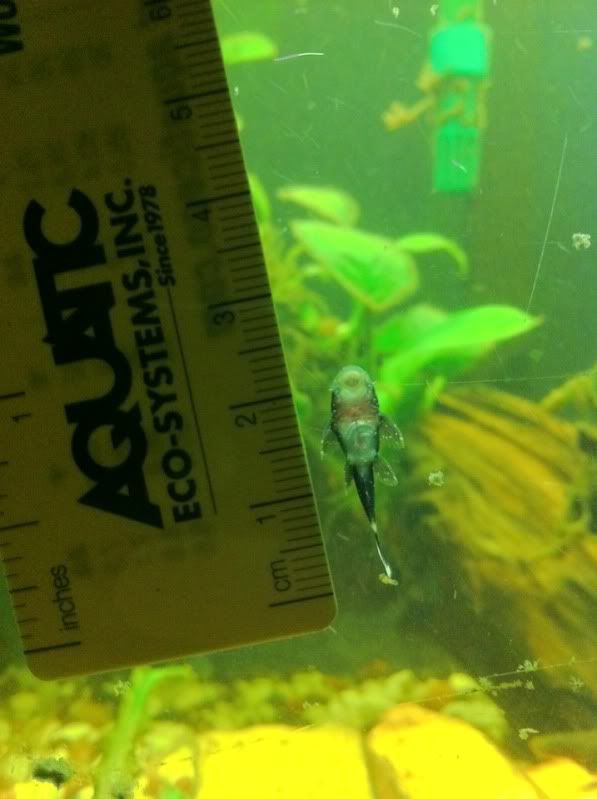
Here are a couple more pics that show the slight size difference in the two groups of fry.

I think there getting enough to eat. Check out that poop trail.
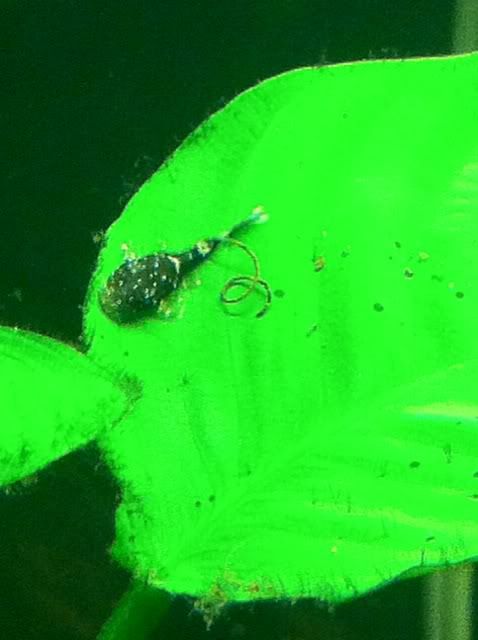
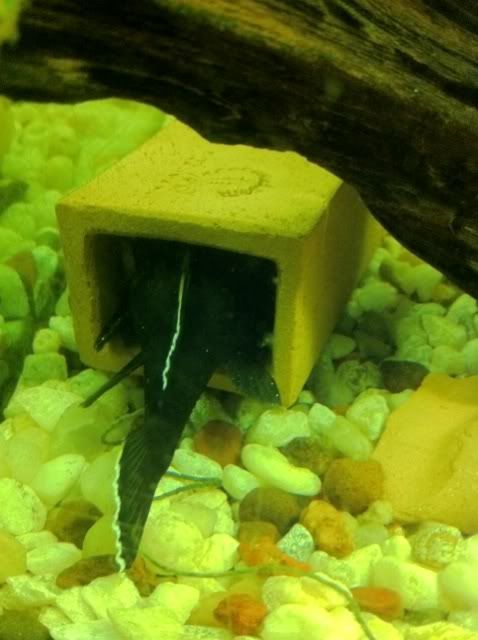
Re: My 183's mated and I didnt even know it!!!
Posted: 07 Mar 2011, 19:02
by bsmith
Just fixed the pix dont know what the problem was./
Re: My 183's mated and I didnt even know it!!!
Posted: 09 Mar 2011, 02:43
by yuanyelss
I do not know from personal experience, but I must say, they are quite recently "released " - this probably refers to spawn two or two weeks before (or at least "common"birstlenose about two weeks of freedom When swimming, but it also depends on water temperature)
Re: My 183's mated and I didnt even know it!!!
Posted: 09 Mar 2011, 16:09
by bsmith
From the research I have done it seems that the fry become free swimming around 2 weeks. Since when I found them they were all free swimming I will say that they were at least 2 weeks old. That was 3.5 weeks ago so I think the best estimate for age of the fry is 5-6 weeks.
Re: My 183's mated and I didnt even know it!!!
Posted: 14 Mar 2011, 18:33
by bsmith
All I have to report is that the kids are growing larger nicely and im having a lot of fun watching them forage. I put 4 slices of zucchini in the tank yesterday and in 3 hours it was almost completely gone! Not sure if it was the babies or if the adults were in on the mix too.
Ill try to take some pics tonight and see if I can find out anything else exciting.



